
A local amateur operator (WB5PJB Gary) reached out to me recenty to see if I wanted to get involved using LoRa APRS on 433 MHz. Gary and I used to talk quit a bit years ago when were experimenting with D-STAR and D-RATS file transfers, but we had never met in person. I had played around with 915 MHz briefly using Meshtastic, and had a few of those boards but never really got into it. So when Gary reached out I though this sounded like a fun thing to dive in to and a good opportunity to meet him in person.
A group of amateurs in the South Metro/Douglas County Colorado area have been using LoRa APRS and setting up a network of i-gates which feed into APRS-IS. They have used this system to support a motorcycle ride in the foothills, and have had a lot of success. Check out the ARESDEC LoRa APRS web page for more details.
LoRa (“Long Range”) is a chirp spread spectrum modulation technique which can be used at low power levels. LoRa “encodes information on radio waves using chirp pulses – similar to the way dolphins and bats communicate! LoRa modulated transmission is robust against disturbances and can be received across great distances.” LoRa generally operates in unlicensed radio spectrum (e.g., 433 MHz, 868 MHz, and 915 MHz). Because LoRA is suited for small data packets that do not need to be transmitted and received at high speeds, it is a good fit for APRS. Using LoRa for tracking locations and feeding into the APRS system requires LoRa i-gates to connect to APRS-IS, hence this project.
Gary and I met along with Art (N0AIU – another north metro amateur operator) to set up some LoRa i-gates and trackers. The i-gate hardware are the LILYGO® LoRa32 433 MHz (version 1.6 through 2.1), and the trackers are LILYGO® T-Beam Meshtastic 433 MHz (soldered OLED version 1.0 through 2.1). These devices get programmed with firmware by Ricardo CA2RXU. He has both i-gate firmware and tracker firmware. These are programmed using VSCODE. Ricardo has good instructions for this on his github repositories. Power output for the boards is set at 20 dBm in the firmware, which corresponds to 100 mW. One can use an external amplifier to boost this up to 1W, 5W, 10W, etc if needed.
Thanks to Gary, I am up and running with the northern-most LoRa APRS i-gate in the Denver metro/Front Range area: W0RMT-40. It seems to be the informal convention of this group and mode to use higher SSIDs to distinguish from VHF APRS stations.
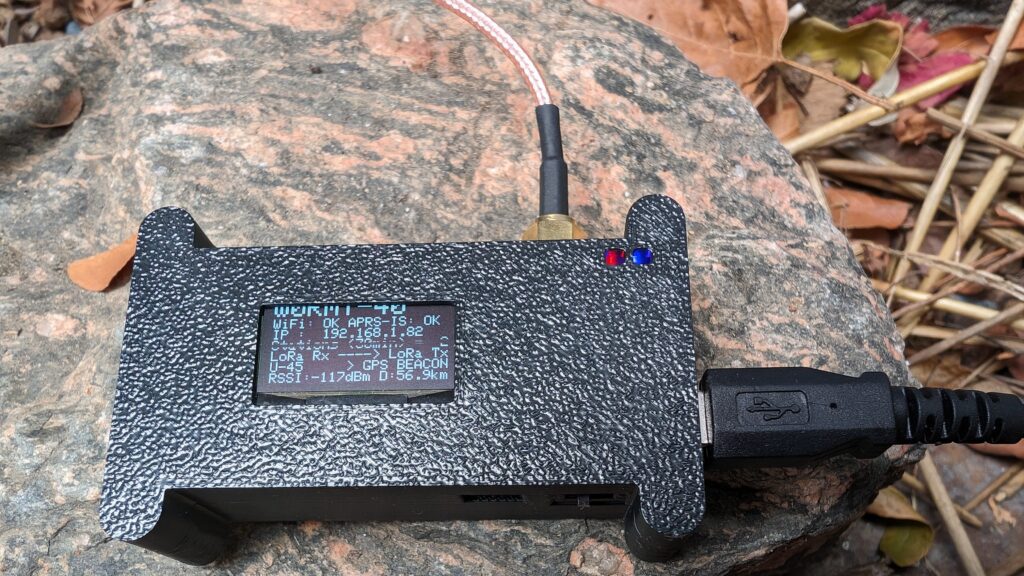
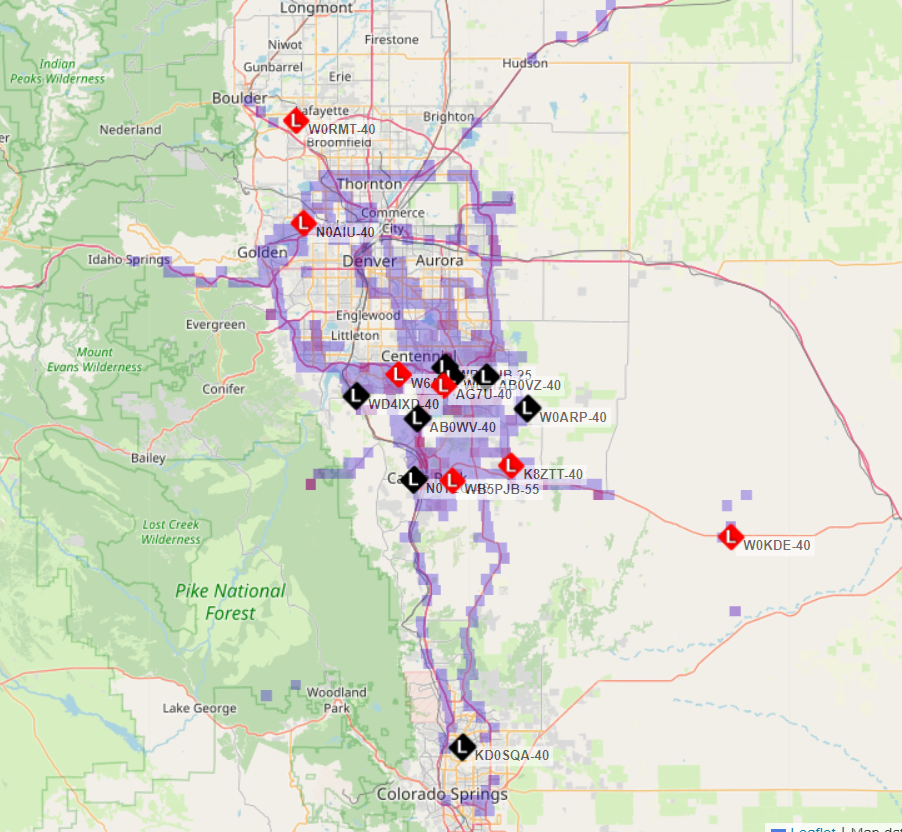
I’ve also got one low powered (100 mW) tracker (W0RMT-45) to mess around with, and a higher-powered (10W) tracker to experiment with as well.
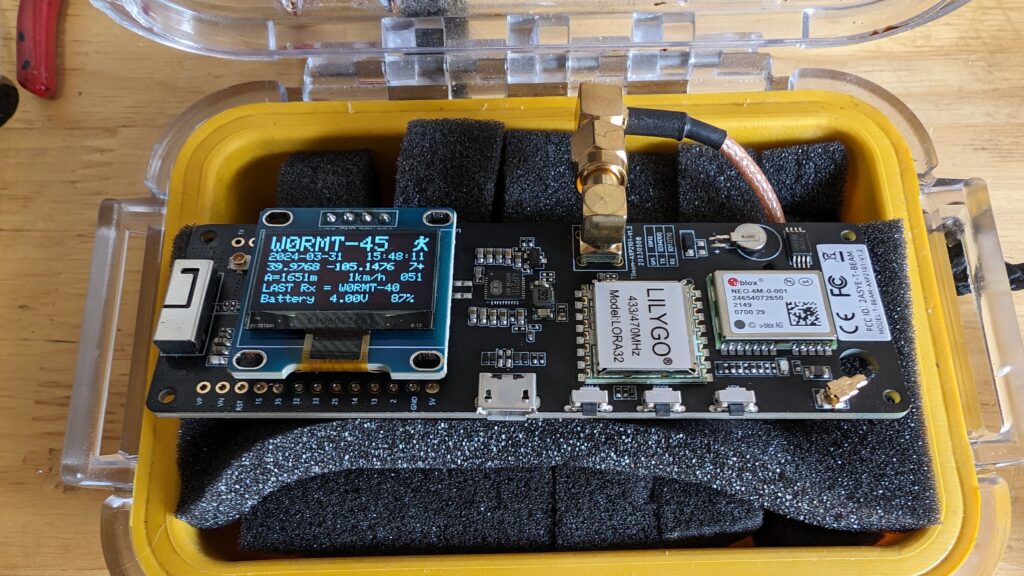
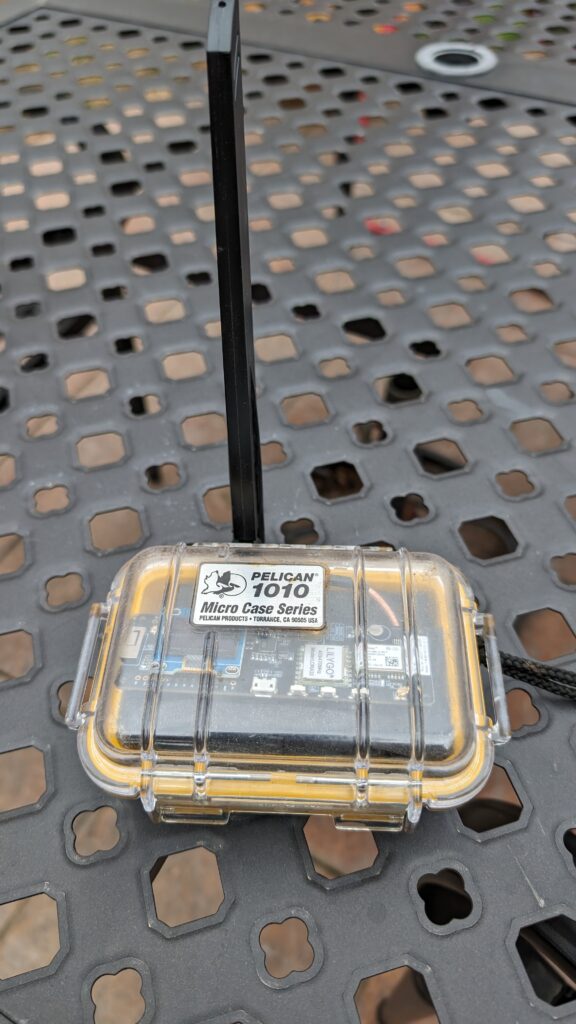
I’m looking forward to using this system and experimenting a bit. I am impressed that my i-gate is receiving and decoding beacons from a low-power i-gate over 47 miles away at -123 dBm / -9.75 dB! Below is a profile for the line from a mobile tracker I received that is 34 miles away. It’s an advantageous line of sight for the mobile, but still an impressive reception and decode for a lower power tracker.

And finally, here is a quick test of the 100 mW tracker on the dash on my truck while making a short local round trip. It is amazing what such low power can do.
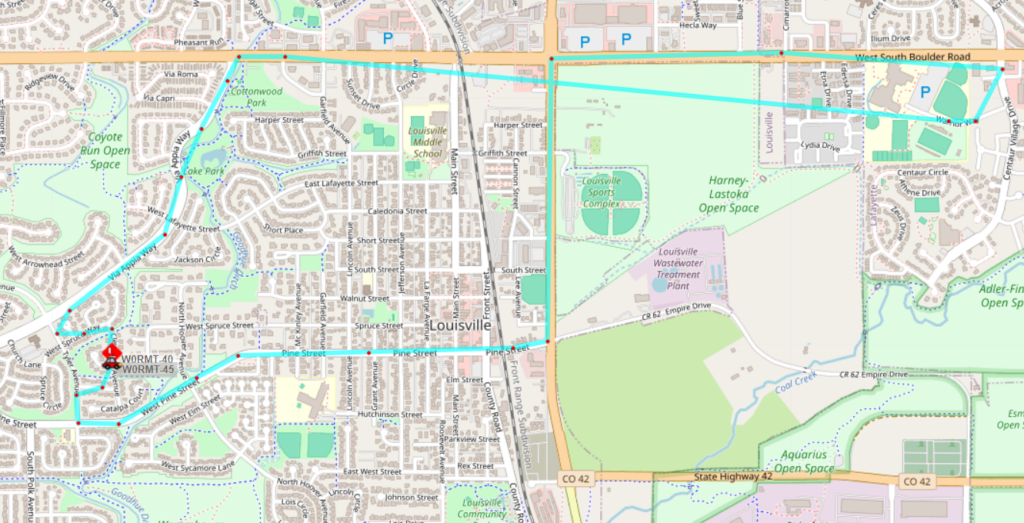
Next steps will be to install a tracker in my truck, and use another tracker in a smaller case (the Pelican case is temporary) while I am hiking and running.
Leave a Reply